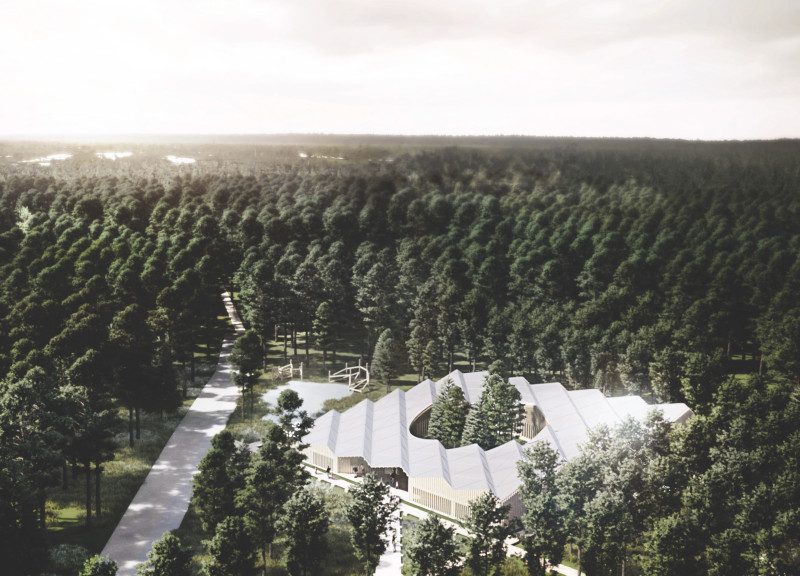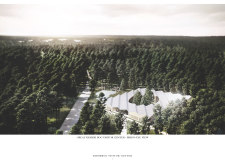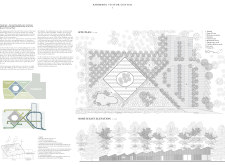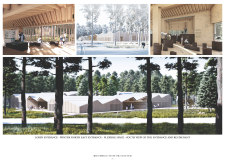5 key facts about this project
Functionally, the Rhombog Visitor Center is designed to cater to a variety of user needs. It hosts educational exhibitions on the local ecosystem, provides visitor services, and facilitates community gatherings. The architectural design emphasizes accessibility and interaction with the natural surroundings, featuring flexible spaces that can accommodate a diverse range of activities. The building’s layout is organized around a central courtyard, promoting airflow and light while encouraging social interaction among visitors.
One of the defining features of the Rhombog Visitor Center is its unique rhomboid shape, which responds to the undulating terrain of the bog. This form not only enhances the aesthetics of the building but also allows for a seamless flow of movement throughout the interior spaces. Large glass panels are strategically used in the façade, creating visual connections between the indoor environment and the natural landscape outside. This design choice maximizes natural light and invites the vast beauty of the surrounding environment into the visitor center.
In terms of materiality, the project focuses on sustainability and environmental harmony. Responsibly sourced timber is prominently used throughout the structure, ensuring that the design reflects local building traditions while minimizing its ecological footprint. Steel and concrete elements provide the necessary structural integrity, while high-performance insulation materials enhance the building's energy efficiency. Collectively, these materials contribute to the comfort and functionality of the space.
The design of the visitor center prioritizes user engagement through inviting public spaces and facilities. Educational areas are specifically designed to host exhibitions and workshops that foster a deeper understanding of the local ecology. Additionally, the integration of a café and restaurant within the center encourages visitors to spend time on-site, further enhancing their experience and connection to the landscape. Outdoor gathering spaces complement the architecture, offering areas for relaxation and community interaction.
What sets the Rhombog Visitor Center apart is its sensitive approach to architecture, which emphasizes a dialogue with the natural environment. The project embodies a commitment to fostering stewardship of the surrounding landscape while providing a functional and educational venue for visitors. The careful consideration of site placement, material selection, and spatial organization demonstrates a thoughtful approach to contemporary architectural challenges.
As you explore the architectural plans, sections, and designs associated with the Rhombog Visitor Center, you will gain greater insight into the numerous architectural ideas that inform this project. The attentive balance between utility, sustainability, and aesthetic integration invites visitors and community members alike to appreciate both the architecture and the remarkable natural environment of Great Kemeri Bog.


























